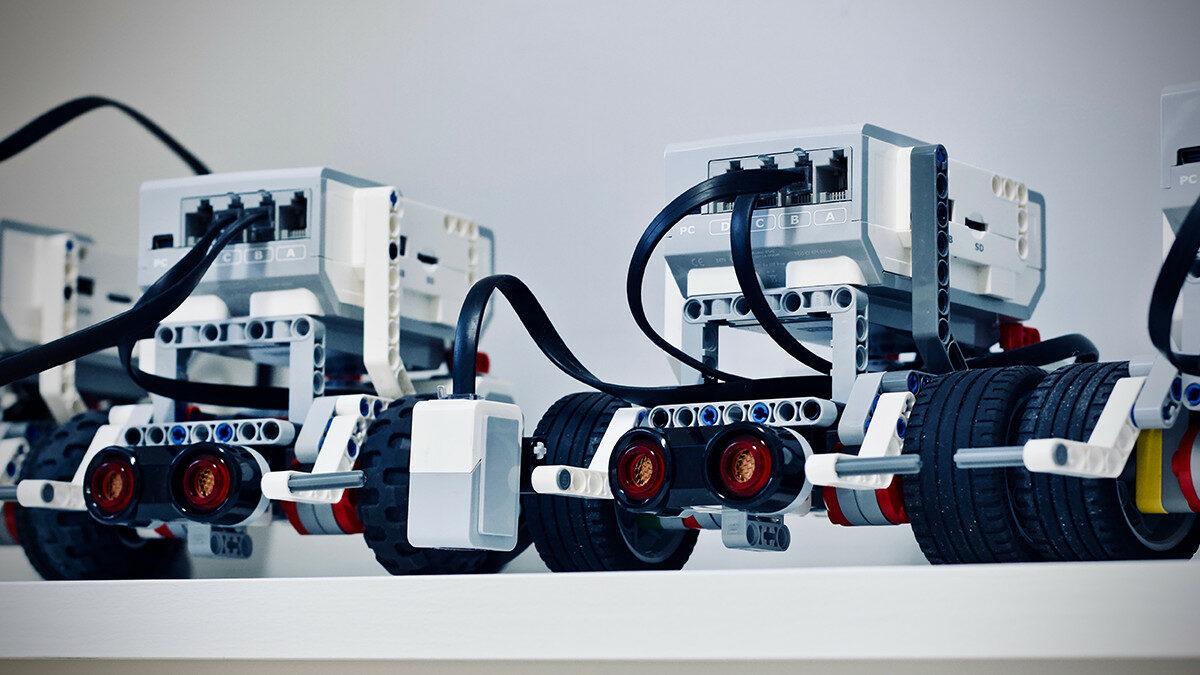When you hear the word robotics, you might think of a machine that looks a BIT like a human being – something you might have seen in a science fiction film… but there’s a lot more to robotics than that.
Robotics is, well, simply about machines that are designed to do a specific job, and carry out a series of instructions and complete them.

The really amazing thing is, we’re all very likely to encounter them every day – and not just new technology like robotic vacuum cleaners either!
If you’ve gone through an automatic car wash or a door that opens on a sensor, if you’ve used a lift, taken money out of a cash machine or even used a vending machine to grab a drink, it COULD be said you’ve interacted with robotics!
So how do we define what robotics actually are?
As well as carrying out a series of instructions, there are other often quite common characteristics that differentiate a robot from a complex machine.
Chief among these is a robot’s ability to respond to its environment autonomously and alter its program to complete a task, and then recognise when the task is complete.

Where it all started
Leonardo da Vinci was perhaps one of the first pioneers in robotic design over 500 years ago! His robot was a mechanical knight capable of sitting up, waving its arms, moving its head and opening and closing its jaws.
Fast forward to 1928, and a robot in humanoid form called Eric was shown at the annual Model Engineers Society in London where he delivered a speech while moving its hands, arms and head.
Robots started to be used more seriously in industry in the second half of the 20th century.
General Motors began work with a robot called Unimate in 1959.
Designed by George Devol, Unimate was a robotic arm that was used to manipulate hot diecast parts in automobile manufacturing – a task that was dangerous for humans to perform.
Being able to operate in dangerous environments and with hazardous substances are certainly key benefits of robots.
Today, they’re commonly used in almost every branch of manufacturing – from assembling cars and household appliances to picking up and loading things onto lorries for distribution – which could be anything from appliances to the food we eat.
And robots are helping with the deliveries too – say hello to Starship!
Starship are battery powered, self-driving robots and they’re already being used in some parts of this country to carry items, such as groceries, hot food or parcels, over short distances – Equipped with a suite of sensors, along with 12 cameras Starship can enable each one to see where it’s going. They travel at ~4mph – similar to a fast pedestrian walking speed.

What’s important
Accuracy is another benefit in robotics.
Of course, while they are only as effective as the instructions with which they are programmed, they can carry out intricate procedures over and again, exactly the same way, without getting tired – something that’s useful in surgery, as well as assisting rehabilitation, disinfecting hospital rooms and surgical suites, and a host of other tasks.
And then we have everyday robotics for our homes – like Roomba, the vacuum cleaner we mentioned earlier – and robots that cut your grass!
One of the really cool things about robotics is that it encompasses almost every branch of engineering. If you think about it – you need to understand mechanical engineering so that you can construct the moving parts, electrical engineering to create the circuitry – most likely computer engineering to design the software to provide the instructions and a whole host of other types of engineering depending on what the robot is designed to do.
Another really cool element that’s new to robotics is something called machine learning, where a robot is equipped to accumulate facts and data through human input or sensors. It processes the new information to update its own program to decide the best course of action. In medicine, this could be analysing X-Rays and beginning to learn the patterns which indicate disease.
Add a comment






